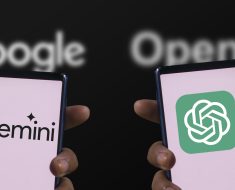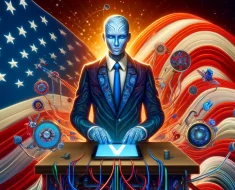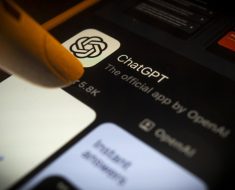Let’s be real: Artificial intelligence (AI) is everywhere, and its job impact is changing how we work at lightning speed. The AI job impact is more nuanced than most people realize. If you’re wondering whether these intelligent machines will steal your job or open up exciting new career paths, you’re not alone. I’ve researched the data, and the story of AI’s influence on employment is far more complex than the alarming headlines suggest.
The AI Job Impact: Displacement Reality Check


First off, yes, robots are taking some jobs. Manufacturing has been hit hard, with assembly lines now looking more like high-tech workspaces than traditional environments. A recent Goldman Sachs report dropped a significant finding: generative AI could potentially automate up to 300 million full-time jobs in the US and Europe1. Administrative work, financial services, and even software development aren’t immune to these digital workers.
But here’s the crucial insight – it’s not all negative. An IBM study found that only 14% of workers have actually experienced job displacement due to AI2. That’s not exactly the technological takeover we’ve been warned about. The AI job impact varies significantly across industries and job roles, with some sectors experiencing more disruption than others.
New Opportunities in the AI Job Impact Landscape


Think of AI as less of a job eliminator and more of a job transformer. Take agriculture, for example. Farmers aren’t being replaced – they’re getting technologically empowered. Drones, predictive analytics, and AI-driven tools are helping them work more efficiently and precisely. This technology is creating new roles in data analysis, system maintenance, and precision farming3.
Customer service is another prime example. Those chatbots handling basic inquiries? They’re freeing up human workers to tackle more complex, meaningful interactions. It’s not about replacing people – it’s about letting humans do what they do best4. The AI job impact here is about augmentation rather than replacement.
The Skills Evolution Driven by AI Job Impact


Here’s a critical wake-up call: the job market is changing, and so should your skill set. AI literacy, programming, and data analysis are becoming as crucial as knowing how to use a computer was 20 years ago. We’re seeing explosive growth in fields like AI ethics, machine learning, and cybersecurity5. The workers who adapt will thrive.
This skills evolution is a direct result of the AI job impact. As AI takes over routine tasks, human workers are being pushed towards roles that require creativity, emotional intelligence, and complex problem-solving – areas where AI still struggles to compete.
A Global Perspective on AI Job Impact


This isn’t just a local story – it’s a global phenomenon. Countries like Germany are attracting AI talent from around the world, showing how these technologies are reshaping immigration and workforce dynamics6. The potential economic impact is substantial – we’re talking about a potential 7% boost to global GDP7.
The AI job impact is also influencing global competitiveness. Nations and businesses that embrace AI and successfully navigate the transition are likely to gain significant economic advantages. This global race for AI talent and implementation is creating a new kind of digital divide, with implications for international labor markets and economic policies.
The Human Element in AI Job Transformation


AI isn’t going to replace human creativity, empathy, or complex problem-solving. If anything, it’s pushing us to become more innovative, more strategic, and more human in our approach to work. The AI job impact is forcing us to reassess what truly makes us human and how we can leverage these uniquely human traits in the workplace.
This transformation is also raising important ethical questions. As AI systems become more prevalent in hiring, performance evaluation, and decision-making processes, we need to ensure that these systems are fair, unbiased, and transparent. The AI job impact extends beyond just replacing or creating jobs – it’s reshaping the very nature of work itself.
The Bottom Line on AI Job Impact


AI is changing jobs, not destroying them. Some roles will disappear, but countless new opportunities are emerging. The key is to stay informed, keep learning, and be ready to adapt. This isn’t about competing with machines – it’s about working alongside them.
The AI job impact is a double-edged sword. While it poses challenges, it also offers immense opportunities for those willing to embrace change. As we move forward, it’s crucial that we shape AI development and implementation in ways that benefit society as a whole, rather than exacerbating existing inequalities.
So, are you prepared to navigate the AI-driven workforce, or will you be left behind? The choice is yours. The AI job impact is here to stay, and understanding its nuances is the first step towards thriving in this new era of work.
Citations:
1. Goldman Sachs. “Generative AI Could Raise Global GDP by 7%.” Goldman Sachs Insights, April 5, 2023. Accessed November 8, 2024.
2. CNET. “Generative AI Could Impact 300M Jobs, Goldman Sachs Predicts.” CNET, March 28, 2023. Accessed November 8, 2024.
3. Forbes. “Goldman Sachs Predicts 300 Million Jobs Will Be Lost Or Degraded By Artificial Intelligence.” Forbes, March 31, 2023. Accessed November 8, 2024.
4. McKinsey & Company. “The Economic Potential of Generative AI: The Next Productivity Frontier.” McKinsey Live Webinar, 2023. Accessed November 8, 2024.
5. World Economic Forum. “How Generative AI Could Add Trillions to the Global Economy.” World Economic Forum, July 2023. Accessed November 8, 2024.
6. Goldman Sachs. “AI May Start to Boost US GDP in 2027.” Goldman Sachs Insights, November 7, 2023. Accessed November 8, 2024.
7. McKinsey & Company. “Generative AI and the Future of Work.” McKinsey Global Institute, 2023. Accessed November 8, 2024.
Please note, that the author may have used some AI technology to create the content on this website. But please remember, this is a general disclaimer: the author can’t take the blame for any mistakes or missing info. All the content is aimed to be helpful and informative, but it’s provided ‘as is’ with no promises of being complete, accurate, or current. For more details and the full scope of this disclaimer, check out the disclaimer page on the website.




